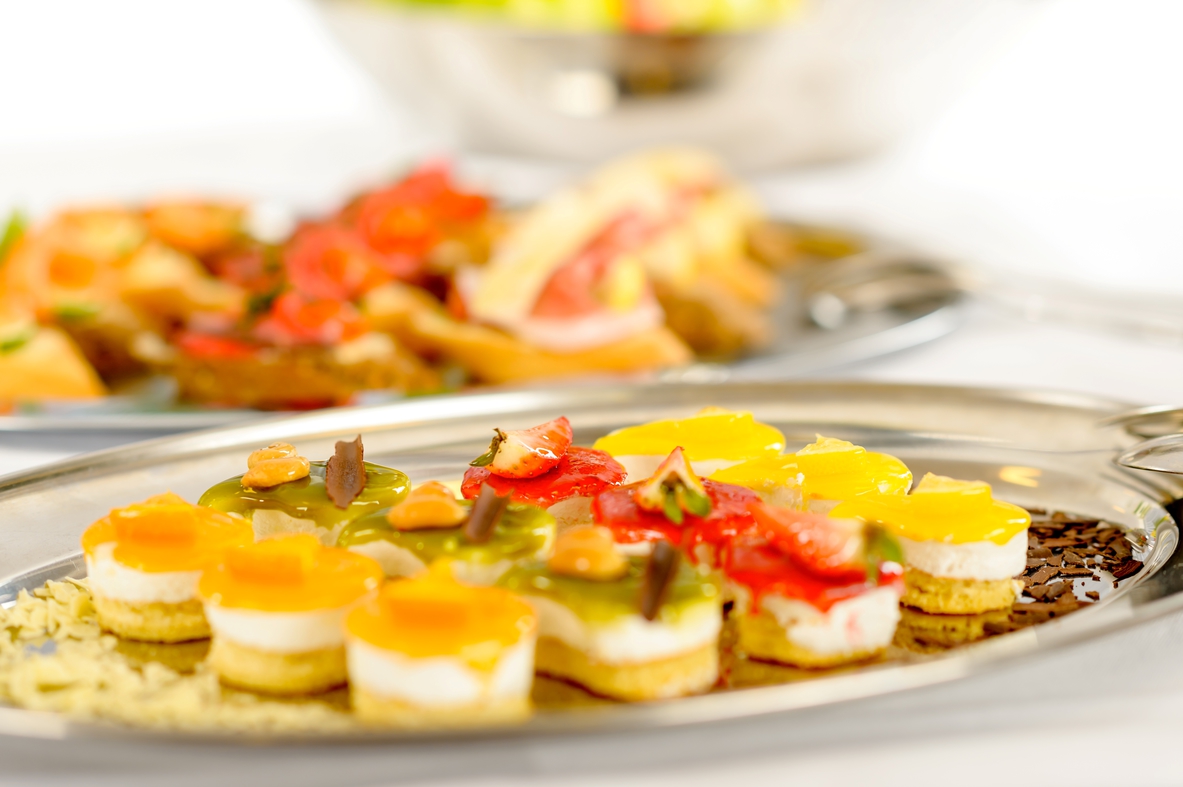As we approach the end of the business year, many caterers are wondering how their company's profitability compares to that of other caterers, and other types of businesses. Catering can be among the most gainful hospitality industry sectors, but having a clear understanding of the industry standards for profit is very important for the long-term success of any catering business.

What is the range of expected annual percentage profit for all caterers?
Having managed and consulted for caterers of all different types and sizes, the CCU has seen a wide range of financial results. At the high end, there are caterers that have consistently shown pretax profit of over 25%, an impressive percentage in any industry. We also know of caterers that have barely been able to eke out any profit in the entire life of their companies. But the average pretax profit of all of the caterers we have worked with over the years has been 7% to 8%. For purposes of comparison, the average pretax profit in the full service restaurant industry is 3% to 4%.
What are some shared characteristics of highly profitable caterers?
One common trait of most of the extremely profitable caterers we have worked with—those consistently showing pretax profits of 15% or more—is that they tend to be single market focused caterers. Some examples might be an on premises caterer that just does weddings, or a corporate caterer that only does deliveries, or a full service caterer that solely does venue based events. Multi-market caterers have some of their own advantages—they tend to get larger quicker, and they can more easily survive a cyclical downturn in the economy. But the tradeoff is that broadline caterers are often not as profitable on a percentage basis as their single market peers.
Are higher end caterers more profitable than mid-market caterers?
Based on industry surveys of restaurants, the best menu price point to maximize profits for restaurants is in the middle of the market. This means a price point above fast casual and quick serve restaurants, but below very high-end restaurants. There has never been a similar price point versus profitability survey done of the catering industry. However, based on an informal review of caterer profitability by price point, we believe that midrange caterers are generally more profitable than either boutique caterers or budget caterers.
This many seem somewhat counterintuitive, since boutique caterers often capture the very high-end events, which generate much higher per guest revenue. But boutique caterers generally have a smaller base of revenue over which to spread their fixed costs, while at the same time are required to purchase the most expensive products and employ the most skilled staff. Most of the highly profitable single market caterers as described above are mid-market operators.
Does the legal and tax structure of my business impact my expected profit?
Yes. Since Subchapter C corporations pay taxes through the corporations rather than through the owners (as is the case with Subchapter S corporations), a C corporation will often show higher unadjusted profits. Another example—a company that is organized as an LLC is required to pay its members (effectively partners) through distributions of profit rather than through payroll, which also may artificially inflate profits in comparison to other non-LLC caterers.
What are the most effective tools to use in order to improve the profitability of a catering company?
As is the case with any type of business, having a clear understanding of how your catering company is performing financially on a timely and ongoing basis is crucial. There are a number of tools that should be part of the financial management system for every caterer. Here’s a look:
A bookkeeping system with a properly organized chart of accounts. Virtually all caterers, even the smallest mom and pop companies, can afford to use a modern computerized bookkeeping system. But without a well thought-out chart of accounts, these systems may not provide as much useful information on their various reports as they should. As an example, we see many caterers who lump all of their revenue into a single income account. However, it is clearly advantageous to have revenue accounts reflecting the different line items that most caterers charge—food, beverage, labor, rentals, venue fees, outside services, etc.
On the other side of the coin, there are catering companies that have too much detail in their financial reports. If you find your income statements/profit and loss reports hard to understand, then the odds are you have too many accounts.
A practical way to analyze the profitability of individual events. The profitability of any catering company is the aggregate of the profit and loss of each of its individual events. It is crucial that every caterer has the tools available to analyze individual events. Most of the catering software systems on the market today have this functionality built into the system, though some caterers use a basic spreadsheet system to do this as well.
Regular reviews of key performance indicators/metrics. There are a number of KPIs that are specific to different types of caterers—a few examples are food cost, event labor cost, kitchen labor cost, gross profit, cost of occupancy, break even, and receivables turnover, to name a few. These metrics are usually extracted from monthly profit and loss reports, using a spreadsheet. Once the spreadsheet is set up, it should only take a short amount of time to extract and review these numbers on each month.
Experienced and knowledgeable professional support. CPAs and consultants each perform a different but necessary role in providing expert advice to help caterers grow their businesses. The key to a successful relationship with professional services providers is to make sure that you work with those with experience and expertise in the catering/events industry.
These and other systems can help every caterer achieve a level of profitability, which makes the catering industry a highly desirable business.
 Carl Sacks is the executive director of the Leading Caterers of America.
Carl Sacks is the executive director of the Leading Caterers of America.



